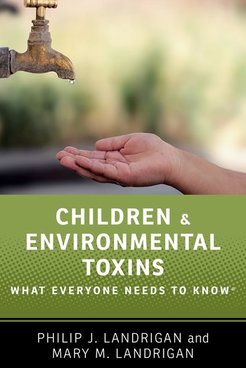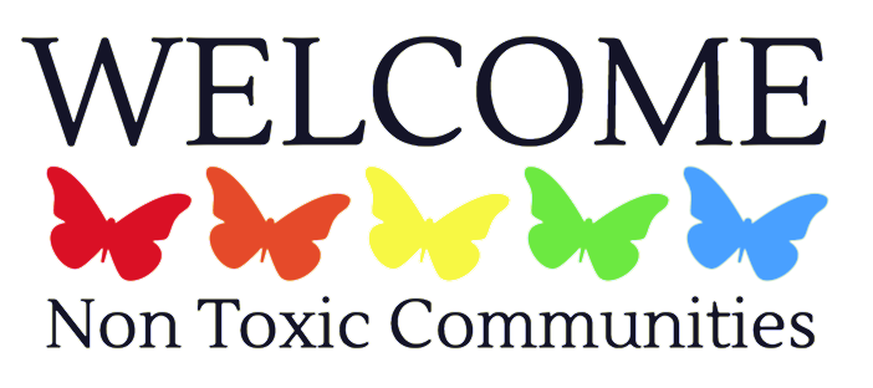|
Dozens of municipal ordinances restricting pesticides in public parks, playgrounds, and schools around the country are at risk of being reversed by a rider in the House of Representatives Farm Bill. This provision would create federal preemption laws prohibiting local control of pesticides like glyphosate, dicamba or 2,4-D. Sec. 9101 of the House’s farm bill could potentially overturn 155 different ordinances protecting residents from toxic pesticide use in public areas. This rider is opposed by the National League of Cities and the National Association of County Officials. Over 100 members of Congress have expressed their opposition to the pesticide preemption in section 9101 in a letter sent to the committee members this August. Mayors Ethan Strimling and Claudia C. Cohen of Maine say that section 9101 hurts the ability of communities to protect the health, and environment of citizens. Chemical industry groups like CropLife America are lobbying hard to get this provision to go through and protect their profits. We need to stand with those that oppose Section 9101, and tell the committee to reject this dangerous rider so that municipalities can protect residents, children, pets and the environment from exposure to toxic pesticides. Read more about the farm bill rider here. TAKE ACTION: Phone calls make the most impact! Senate Ag Committee: (202) 224-2035 House Ag Committee: 202-225-2171 Let them know you stand with thousands of other people who support the 1991 Supreme Court decision that rejected the industry position and affirmed the rights of local governments to adopt more restrictive pesticide standards than the U.S. Environmental Protection Agency. Parents, grandparents and many others may wonder what harm there is in hiring a company to treat their lawn, or using the four step programs sold at most hardware stores. The newest book from Dr. Phillip Landrigan, and Mary Landrigan, MPA addresses this issue with practical advice in chapter 8 of Children and Environmental Toxins: What Everyone Needs To Know in the following excerpt. Are lawn chemicals toxic? Yes, many are toxic. Dozens of chemicals are used for lawn beautification in the United States, and they include carcinogens, endocrine disruptors, and substances known to damage other systems of the body. CDC surveys have found that these substances are present in the bodies of most Americans. I don’t use lawn chemicals or other pesticides. How is it possible that my household is still exposed to these toxic chemicals? Consider this troubling problem: your windows are open and your children are playing in the backyard with their toys scattered everywhere. A green-and-white truck pulls up in front of your next-door neighbor’s house and a lawn maintenance worker in a crisp white uniform unrolls a hose from the truck and starts spraying toxic materials on the lawn next door. A fine chemical mist coats the toys in the yard and your kids. The children also inhale the noxious fumes. The term for what you are seeing here is pesticide drift—that is, pesticides have wafted from the area where they are being applied into your backyard or from a farmer’s field into a school playground. Pesticide drift can expose households to toxic materials without their knowledge. It can come from a neighbor’s yard or a nearby farmer’s field, or just from wearing pesticide- contaminated shoes in the house. Studies have shown that some widely used pesticides can remain where they were sprayed for weeks after initial spraying. Other studies show that pesticides are easily tracked into the house, exposing the children who play on the floor. Here are a few simple steps to protect from this hazard. Conduct some neighborly negotiations to try to remedy the problem. Find out what chemicals are being used on the neighbor’s property and explain your concern about the pesticides’ spreading into your yard and harming your children. You might want to bring along some educational materials on the topic—including this book. Perhaps also have available the name of a company that uses nontoxic products that you can steer the neighbors to. Contact your local health department or environmental protection agency. Ask if there are any laws or regulations in your area regulating pesticide drift. Many cities and towns in Canada and the United States now have such laws. Get your neighbors together to address the problem. Some towns have laws that require neighbors to be notified 48 hours in advance of the application of pesticides on adjoining properties. If you know at least 48 hours in advance, you’ll have time to close your windows, bring in the children’s toys, and keep the children indoors. And if there is no local law, consider working with your neighbors and your elected officials to get one passed. How can I tell if a yard has been treated with pesticides? Even if you don’t use pesticides on your own lawn, you’ve probably noticed how many of your neighbors’ lawns display “pesticide flags.” Pesticide flags are the required notices to passers- by to stay off the grass for 24 hours because pesticide has been applied to the lawn. But dogs and children probably don’t observe the pesticide flags, and many of the flags seem to stay up for weeks or longer, so it is difficult to know which warnings are current and which have expired. The pesticide treatment flags on the lawns tell you something else—they give you an idea how many neighbors are using pesticides to keep their grass looking nice. This is called “cosmetic” pesticide use. Some localities have begun to pass laws against cosmetic pesticide use. The City Council of Takoma Park, Maryland, and the Province of Ontario, Canada passed laws to restrict the cosmetic use of pesticides on public and private properties. These laws reduce pesticide exposures and also help to prevent pesticide drift and pesticide migration from treated properties to untreated properties. Pesticides are chemicals that have been devised to kill pests. Insecticides kill insects by disrupting an insect’s neurological system—a basic biological system that we humans also have. Moreover, insect brains and human brains share many of the same enzyme systems. Is it reasonable to think that we are immune to such toxins? Keep your children and pets safe by keeping them away from pesticide-treated lawns. Better yet, encourage your neighbors to use the least toxic materials available to control lawn problems and to rethink their attachment to a weed- free monoculture lawn. A few dandelions can be a beautiful sign that people are not using toxic chemicals to the detriment of people and the environment. How can I have a nice lawn without chemical fertilizers and pesticides? The safer approach to a nice, green lawn—give or take a dandelion or two—works like this: Plant the right grass for your region of the country. Native plants grow the best in any environment. Nature has already made the selection about what grows best—don’t go to war with nature. Find out what types of grass grow best in your region by contacting your local cooperative extension office, a service of the United States Department of Agriculture. Adjust your lawn mower blade to its highest setting. Longer blades of grass will enable the grass to develop stronger root systems and compete better with weeds. Taller grass also protects the root system of the grass by shading the roots from the harsh rays of the sun. On dry days, the longer blades help the root system maintain some moisture, and therefore they really help to minimize the lawn’s need for extra water. Leave your grass clippings on the lawn. When grass clippings break down, they add valuable nitrogen to the soil, which in turn creates a healthy self- fertilized lawn. A mulching mower will help the process move along a little faster. In the spring, give the lawn a brisk raking to remove any remaining thatch and allow the baby grass blades to get an early start. Use nontoxic methods of weed control for weeds you can’t live with. Hand weeding can be a relaxing and satisfying excuse for spending an hour outdoors on a nice day. Don’t keep count of how many are still left— learn to make peace with your lawn. To discourage broadleaf weeds from taking over the lawn, apply corn gluten to the lawn at the same time that the forsythia is blooming. Corn gluten is a natural, pre- emergent weed controller and is readily available in many garden stores and online. For well- established broadleaf weeds, hand weeding is the best nontoxic control. Replace some of the lawn with a small rock or native plant garden. Your local library will have designs for small garden areas to suit any style of house. Planting a small rock garden with native plants can cut down on lawn watering needs. Find native plants that like the location you have chosen and they will thrive with little care. From Children and Environmental Toxins: What Everyone Needs to Know by Philip J. Landrigan and Mary M. Landrigan. Copyright © 2018 published by Oxford University Press. All rights reserved. After a lot of hard work behind the scenes, we are very proud to finally unveil our new upgraded website.
Since 2015 we've had many resources in our Facebook group, How to Create a Non Toxic Community. These included lists of scientific studies, pesticide free zones and policies, sample letters, and more. Now all of those resources, plus several new ones, are available here in an easy to find format. Please take a look around and let us know what you think! |
Archives
March 2024
Categories |
|
Non Toxic Communities is a 501 (c) (3) charitable organization
Nontoxic Communities Foundation, Inc. dba Non Toxic Communities Copyright © 2024 Non Toxic Communities - All Rights Reserved Site design by Bee Rooted | About Us | Contact Us |



 RSS Feed
RSS Feed
